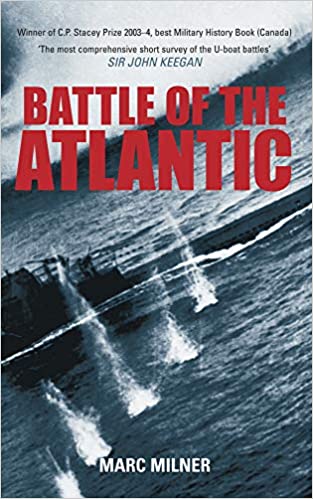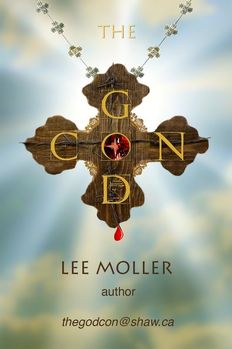 The Battle of the Atlantic (BoA) spanned almost the entire war, making it the longest war battle (any war) by a considerable margin. I found this book very informative, at least as far as ASW (Anti-Submarine Warfare) is concerned, and it has a large number of excellent photos, some only rarely ever seen. The battle was a classic example of move versus counter move, and technology versus counter technology. Britain won the technology wars with the aid of the USA. But in my mind, the real heroes of the war were the Canadians. Because the BoA lasted so long, it is hard to sum up neatly, or even find a specific turning point. If you saw the movie Greyhound w/Tom Hanks, you should try to forget it. While the ASW was pretty authentic, the idea of a American rookie destroyer captain leading three British escorts in herding a convoy across the Atlantic only one month after the US entered the war is a non-starter. The screenplay was written by Tom Hanks, and he succumbed to the lure of making the war all about the Americans. Admiral King ran the entire US Navy. He did not like the Brits and dismissed any and all of its sub hunting experience as twaddle. The British had been fighting the BoA for well over a year at that time. They had developed standards of practice that proved very effective. The US would enter the BoA in earnest after they started getting their own ships sunk off American waters. A much better, hard to find, movie about Canada and sub chasing is called Corvette 225 with Randolph Scott. It was a US production, but was very accurate in its depictions of Canada's role. In the BoA, the heroes were Canada (in part because we did more than our fair share) Britain, and the US… in that order. The Canadian Flower Class Corvette was a major player on the BoA. It was a small, single screw, sub chaser that played a large role. You would not want to be on one. Canadian destroyer crews used to joke that Corvette crews should receive submariner pay since its Corvette's forecastles spent so much time under water. Later versions enlarged and redesigned the forecastle to ease this problem. Later, twin screw versions of the Corvette were built and dubbed Frigates. The major technologies for the allies at play in the battle were: Huff Duff (HF/DF or High Frequency Direction Finding): Huff-Duff detected radio signals and calculated bearings and ranges. The Germans did not believe that the Brits could put radio direction equipment on a boat as it would be too bulky. This error in judgment would cost them. ASDIC (aka Sonar): This technology improved with every passing year. Active sonar used the infamous "ping"; passive listened for screw noises. RADAR (10cm and 3cm wavelengths): Radar at sea was a huge advantage. The shorter the wave length of the radar signal the better. It is a basic law of physics that you cannot see anything that is smaller than the wave length of the light being used. Radar is a kind of light. If you want to see a periscope, 10cm radar would catch it. If you want to see a sub snorkel, you need shorter wave lengths. Radar equipped airplanes would sink more submarines than any other mode of attack. Leigh Lights: Once an airplane, often a Sunderland flying boat, saw a sub with radar at night, it would sneak up on sub until they were almost on top of it, then turn on their very bright Leigh Light mounted under the plane flooding the sub in light, and then drop contact bombs. This meant that German subs were vulnerable when running on the surface, even at night. Running on the surface was required to recharge the sub's batteries. Air Dropped Acoustic Torpedoes: Of course, a sub chaser cannot launch an acoustic torpedo against a submarine because the ship itself is too noisy, as are the other convoy ships. But an airplane can, which they did to great effect. A typical scenario would be: A Sunderland or Liberator spots a sub radar during the day; it attacks; the sub spots it and dives; the airplane swoops in and drops its torpedo; which chases the sub into the deep and kills it. Hedgehog and Other Contact Munitions: The hedgehog was a large number of forward launched, small, fast sinking, contact bombs. A depth charge is a large explosive which can sink a sub from 20 feet away. The hedgehog was a small contact bomb. If it hit the sub, it would hole the pressure hull, and kill the sub. SQUID: SQUID was a single powerful shallow water, forward launched, depth charge that was slaved to the ASDIC signal of the sub. At just the right time (as calculated by a mechanical computer), as the sub chaser bore down on its target, the SQUID would be fired at the diving sub and explode at a depth based on the ASDIC signal. They were very effective. Shallow Water Depth Charges: Aircraft had no use for the heavy ship borne depth charges designed to sink a submarine at depth. What they needed was shallow water depth charges that could be dropped on a diving sub. They arrived later in the war. Code Breaking: Alan Turing and his code breakers cracked the German naval enigma machine codes. The Germans famously added a fourth rotor to the enigma machine, and Bletchley Park went silent for a year. After that, they were back in the cat bird seat, often cracking German intercepts before the Germans could. That is, they knew where German subs were better than the Germans. The code breakers of Bletchley Park saved thousands of lives and millions of tons of shipping. The major technologies for the Germans at play in the battle were: Subs, and Lots of Them: Compared to a ship, or especially a loaded ship, submarines were cheap. The Germans produced hundreds of Type VIIs (smaller, inshore subs); Types IXs (larger ocean going subs, the German mainstay); milchkuhne ("milk-cow") resupply-at-sea subs; and Type XXIs (equipped with larger batteries and the snorkel). U-boats were literally numbered on their coming towers (the index of this book, under "U" for U-Boat, is very long with entries like U-751, U-752 etc)), and at the wars end, 1,162 had been built! The Snorkel: The snorkel is just what it sounds like. Subs burned diesel and diesels need air. Some Type IXs were retrofitted with snorkels. The war ended in early May, yet in March, 1945, German industry still managed to pound out 100 type XXI subs! But it was too little, too late. Metox: Metox was a detector that warned subs if they were being scanned by radar. It could detect 10cm radar, but not 3cm until well into the BoA. GNAT (German Navy Acoustic Torpedo): When the first such torpedo was fired, it was plain to the people on the target ship that the torpedo was following the ships screw/engine noises. Within days, the Americans create a towable noise maker that defeated the torpedoes. Unfortunately, the US noise maker would shake itself to pieces very quickly. A Canadian design was adopted that worked perfectly. Decent Torpedoes: At the start of the BoA, German's were using magnetic exploders which proved to be very unreliable. They switched to contact exploders, which reduced their kill rate dramatically. Why? When a torpedo with a magnetic exploder passes under a ship, it explodes breaking the ship's back. Many ships required two direct hits with contact torpedoes to go down. The submarine war was the least survivable of German services. All the major sub aces of the war were killed at sea, remarkably the three most famous in just one month. Sixty three percent of submariners never returned home, making it the least survivable service on either side. On the surface for the allies was the Canadian, Johnny Walker, and many others. Walker fought through most of the war and racked up more sub kills than another other skipper. He developed many of the allies' ASW tactics. He died before the war ended of natural causes. The BoA was never really winnable for the Germans. Ultimately, American industrial might would have saved the day. As it was, the Americans were late in, and the BoA was characterized by moves and counter moves. The Germans were slow to adopt new technologies. The Canadians and British quickly adopted radar, HuffDuff, ASDIC, sonar, and the first true computer at Bletchley, called Colossus, for code breaking.
0 Comments
|
AuthorLee Moller is a life-long skeptic and atheist and the author of The God Con. Archives
May 2024
Categories
All
|

 RSS Feed
RSS Feed